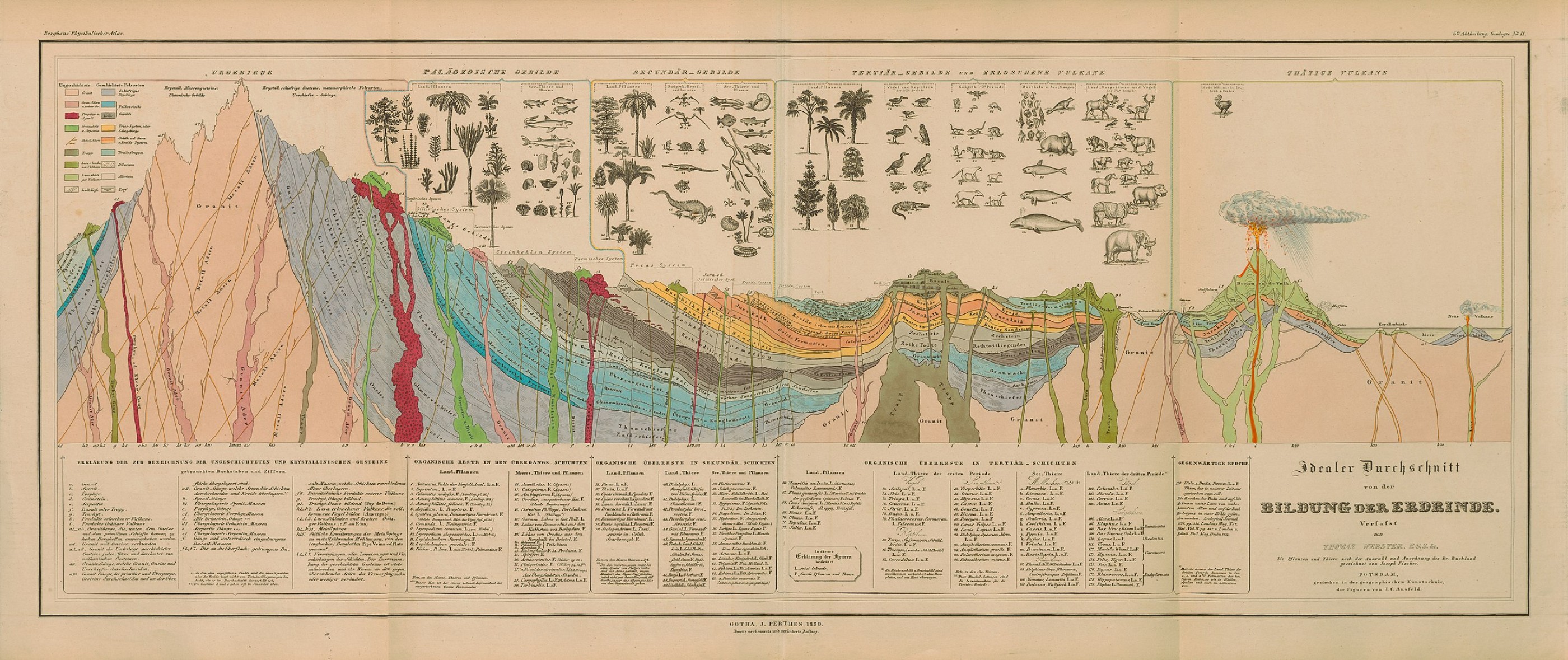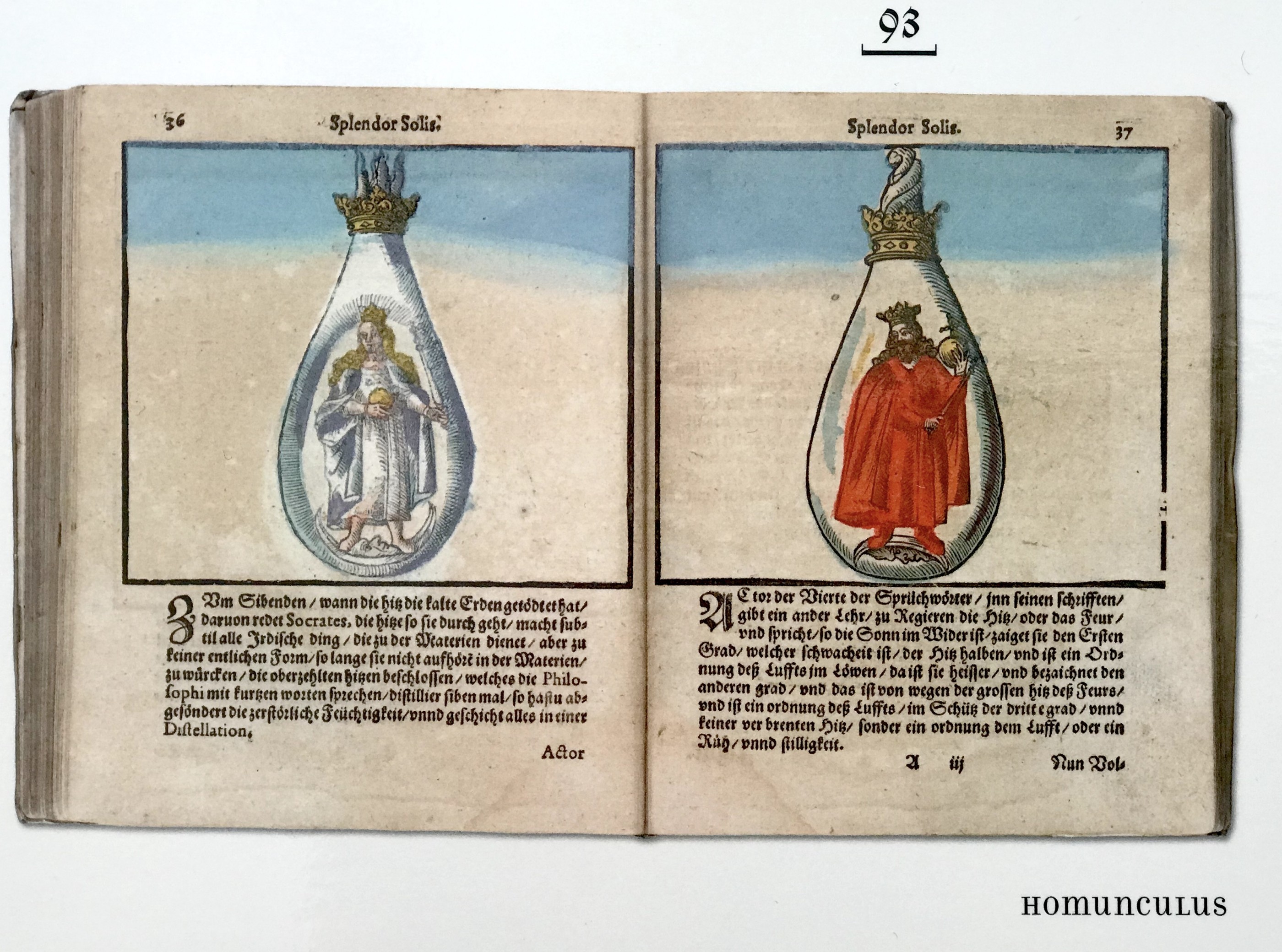Trailer for Füsun Türetken, Neodymium. Superconductive Bio and Metallopolitics, 2019, 02:53. The film highlights the role of Rare Earth Metals, and specifically the lanthanide Neodymium.
[1] Jelle Zelinga de Boer, "Volcanoes and Earthquakes - Inside the Volcano," documentary: www.youtube.com/watch?v=6eHi2NGw-a4, accessed November 30, 2022.
[2] Karen Barad, ‘TransMaTerialiTies: Trans*/Matter/Realities and Queer Political Imaginings’, GLQ, vol. 21, nos. 2–3 (2015): pp. 387–422.
[3] Andrea Wulf, The Invention of Nature: The Adventures of Alexander von Humboldt, The Lost Hero of Science, London: John Murray, 2015, p. 24.
[4] Ibid.
[5] Ibid.
[6] Barad, “TransMaTerialiTies,” pp. 387–422.
[7] “Volcanoes,” National Geographic, online https://www.nationalgeographic.com/environment/article/volcanoes, accessed November 30, 2022.
[8] Dave Mosher, “Life on Earth Began on Land, Not on Sea,” National Geographic (2012), online news.nationalgeographic.com/news/2012/02/120213-first-life-land-mud-darwin-evolution-animals-science, accessed November 30, 2022; A. Y. Mulkidjanian et al., “Origin of first cells at terrestrial, anoxic geothermal fields,” PNAS, vol. 109, no. 14 (2012): E821–E830, online doi.org/10.1073/pnas.1117774109, accessed December 1, 2022.
[9] Geological Society of America, “Earth Structure: Fluid Factory in Solid Earth,” ScienceDaily (2009), online www.sciencedaily.com/releases/2009/02/090226093425.htm, accessed November 30, 2022.
[10] James Hutton, Theory of the Earth, e-version on Project Gutenberg, 1792/2004, online www.gutenberg.org/ebooks/12861.
[11] Jack Repcheck, The Man Who Found Time: James Hutton and the Discovery of the Earth’s Antiquity, New York: Basic Books, 2009, p. 8.
[12] John McPhee, Annals of the Former World, Part 1: Basin & Range, New York: Farrar, Straus and Giroux, 2000.
[13] Magma forms diverse mineral formulations which derive from a single parent magma. The solidified lava rock is created through a crystallization of the silicate-based magma. It is constituted of crystals of diverse minerals, of which many are metal minerals: silicium, iron, aluminium, magnesium, titan, phosphor, biotite, etc.
[14] Friedlieb Ferdinand Runge, Der Bildungstrieb der Stoffe, ed. Judith Schalansky, Berlin: Matthes & Seitz Verlag, 2014.
[15] William J. Broad, “Scientists Find Clue to Peril of Volcanic Eruptions,” New York Times (1993), online www.nytimes.com/1993/04/29/world/scientists-find-clue-to-peril-of-volcanic-eruptions.html, accessed December 1, 2020.
[16] Ibid.
[17] Radboud University Nijmegen, “Rare Earth Metal Essential Element for Methane-munching Acid-volcano Microbe,” ScienceDaily (2013), online www.sciencedaily.com/releases/2013/09/130905085640.htm, accessed December 1, 2020.
[18] The term “supernova” was coined by the German astronomer Walter Baade and the Czech-Swiss astronomer Fritz Zwicky in 1931 to designate the event that follows upon the death of certain types of stars.
[19] Michel Cassé, Stellar Alchemy: The Celestial Origin of Matter, Cambridge: Cambridge University Press, 2003, p. 153.
[20] Tibi Puiu, “How Gold is Made and How it Got to our Planet,” ZMEScience (2019), online www.zmescience.com/science/how-gold-is-made-science-064654, accessed September 2018.
[21] Nick Land, Fanged Noumena: Collected Writings 1987–2007, introduced by Robin Mackay and Ray Brassier, Chacewater: Urbanomic, 2018.
[22] Ibid. p. 498.
[23] Glenn Albrecht, “Solastalgia: The Distress Caused by Environmental Change,” Australasian Psychiatry, vol. 15 Suppl 1(1) (February 2007): pp. 95–8.
[24] Deleuze and Guattari, Anti-Oedipus: Capitalism and Schizophrenia, Minneapolis: University of Minnesota Press, 1983, p. 6.
[25] Ausenco, “M&M Commodities Iron Ore,” Port Design and Management Considerations, Ausenco Insights, accessed 1 September 2018, www.ausenco.com/en/commodity-iron-ore, accessed November 30, 2022.
[26] Using infrared telescopes, astronomers studied the spectra—the chemical composition of cosmic objects—of the collision and found that the plume ejected by the merger contained a host of newly formed heavy chemical elements, including gold, silver, platinum, and others. Marina Koren, “The Plume of Gold Ejected by a Cosmic Collision,” The Atlantic, October 16, 2017, https://www.theatlantic.com/science/archive/2017/10/the-making-of-cosmic-bling/543030/, accessed November 30, 2022.
[27] María Puig de la Bellacasa, Matters of Care: Speculative Ethics in More than Human Worlds, Minneapolis: University of Minnesota Press, 2017. The idea and term of “Gaiaporosis” was only recently developed in collaboration with Natalie Konopelski as a collaborative endeavor; it is not yet published.
[28] In an interview with Paul Gilroy, Toni Morrison explained how slavery took a toll on the white (man’s) psyche:
Slavery broke the world in half, it broke it in every way. It broke Europe. It made them into something else, it made them slave masters, it made them crazy. You can’t do that for hundreds of years and it not take a toll. They had to dehumanize, not just the slaves but themselves. They have had to reconstruct everything in order to make that system appear true.
Quoted in Paul Gilroy, “Living Memory: An Interview with Toni Morrison,” in Small Acts: Thoughts on the Politics of Black Cultures, London: Serpent’s Tale, 1993, p. 178.
[29] Gloria Wekker, White Innocence: Paradoxes of Colonialism and Race, Durham, NC: Duke University Press, 2016.
[30] Mount Tambora is part of the explosive geological territory of the “Pacific Ring of Fire” in which Indonesia is situated. The archipelago is thus prone to earthquakes and volcanic eruptions. The geothermal heat that comes with it attracts capital interest nowadays.
[31] Akhyari Hananto, “An Eruption That Shrouded the Earth and Gave Birth to a Monster,” Seasia, www.seasia.co/2018/04/06/an-eruption-that-shrouded-the-earth-and-gave-birth-to-a-monster, accessed November 30, 2022.
[32] Sarah Zielinski, “200 Years After Tambura Volcanic Eruption Unusual Effects Linger,” Smithsonian, April 9, 2015, www.smithsonianmag.com/science-nature/200-years-after-tambora-volcano-eruption-unusual-effects-linger-180954918/, accessed November 30, 2022. Susan Schuppli’s inspiring video work Atmospheric Feedback Loops (2017) describes among other aspects the phenomenon of a change in Dutch light and how scientists engage with paintings to analyze changes. See: .
[33] Gillen D’Arcy Wood, Tambora: The Eruption That Changed the World, Princeton: Princeton University Press, 2015.
[34] Gillen D’Arcy Wood, “The Volcano That Shrouded the Earth and Gave Birth to a Monster,” Nautilus, December 14, 2015, accessed November 30, 2022.
[35] David Higgins, “Tambora and British Romantic Writing,” in Dehlia Hannah (ed.), A Year Without a Winter, New York: Columbia Books on Architecture and the City, 2018. Higgins refers to Jane Bennett’s concept of new materialist thinking and Vibrant Matter in which she argues that an assemblage also possibly includes humankind with its social, legal, and linguistic conditions. See Jane Bennett, Vibrant Matter: A Political Ecology of Things, Durham: Duke University Press, 2010.
[36] Mary Wollstencraft Shelley, History of a Six Week Tour Through a Part of France, Switzerland, Germany, and Holland, Letter 1, from Hôtel de Secheron, Geneva, May 17, 1816, accessed November 30, 2022.
[37] Ibid.
[38] Gillen D’Arcy Wood, “The Volcano That Shrouded the Earth and Gave Birth to a Monster.”
[39] See Hans-Jürgen Schings, “Aufstieg und Krise des modernen Prometheus,” in Julia Bertschik, Elisabeth Emter and Johannes Graf, Produktivität des Gegensätzlichen, Tübingen: Niemeyer, 2000, pp. 55–68, here pp. 58–61; Christian Kreutz, Das Prometheussymbol in der Dichtung der englischen Romantik, Göttingen: Vandenhoeck & Ruprecht, 1963, pp. 136–52.
[40] Daisy Hay, Young Romantics: The Shelleys, Byron and Other Tangled Lives, London: Bloomsbury, 2011.
[41] Ibid.
[42] Ibid.
[43] The US military has invested in biomimetic robotics. One example is Boston Dynamics’ “Big Dog” robot, a rough-terrain robot that uses animal-like mobility. Roshenac Mitchell, “Overview of Biomimetic Robotics,” accessed April 2019, www.roshenac.mitchell.ch/portfolio/papers/advancetopicformat.pdf.
[44] Reza Negarestani, Cyclonopedia, Complicity with Anonymous Material, Melbourne: re.press: 2008, p. 29.
[45] Shudu is the first digital supermodel, a computer-generated body with an account followed by 238,000 users on Instagram, at the time of writing. The existence of Shudu is the manifestation of the paradigmatic shift toward new forms of labor. It comes with the promise of the “perfect” artificial body visually superior to other female models. The enhanced image technology allows for the creation of the new laborer: Instagram would not exist without metallic wires, or salt mineral screens. Perhaps most significantly, the artificial body would not exist without the formation of a metallic body that exploits the understanding of the female and black body—a new form of exploitation superconducted by rare earth metals.
[46] Mulan Itoje, “The Digital Modelling Agency Fetishising Black Women,” gal-dem, July 15, 2018, accessed August 2018, http://gal-dem.com/digital-model-agency-fetishing-black-women/, accessed November 30, 2022. Shudu's instagram is: https://www.instagram.com/shudu.gram/.
[47] Hito Steyerl, The Wretched of the Screen, Berlin: Sternberg Press, 2012.
[48] Dubai Fashion Forum, “Shudu: Fashion’s First Avatar Supermodel?,” June 13, 2018, http://dubaifashionforum.com/shudu-fashions-first-avatar-supermodel, accessed November 30, 2022.
[49] Fiona Hovenden, “Introduction to Part Four: Refractions (women, technology and cyborgs),” in Gill Kirkup et al. (eds.), The Gendered Cyborg, London: Routledge, 2000, p. 260.
[50] David Higgins, “Tambora and British Romantic Writing,” p. 50.
[51] Alexa Tietjen, “Shudu: Fashion’s First Avatar Supermodel?,” June 13, 2018, accessed November 30, 2022.
[52] As already noted, in Shelley’s novel Dr Frankenstein does not allow his creature to have a partner, as he fears that they might be able to create life themselves and raise and foster a generation of creatures of their own. A posthuman species able to survive any extreme climate condition that humans could not. The narrative can be read as the creator dominating class and race.
[53] E-flux, “The Wretched of the Screen book launch at Pro qm,” November 30, 2012, www.e-flux.com/announcements/33376/the-wretched-of-the-screen-book-launch-at-pro-qm/.
[54] Higgins, “Tambora and British Romantic Writing,” p. 50.
[55] In cryotanks, the metal is employed as an alloy with erbium, in low-temperature procedures down to -269°C, which are needed for the freezing of human bodies or endangered livestock breeds.
[56] David Shaw, “Cryoethics: Seeking Life After Death,” Bioethics, vol. 23, no. 9 (2009): pp. 515–21.














